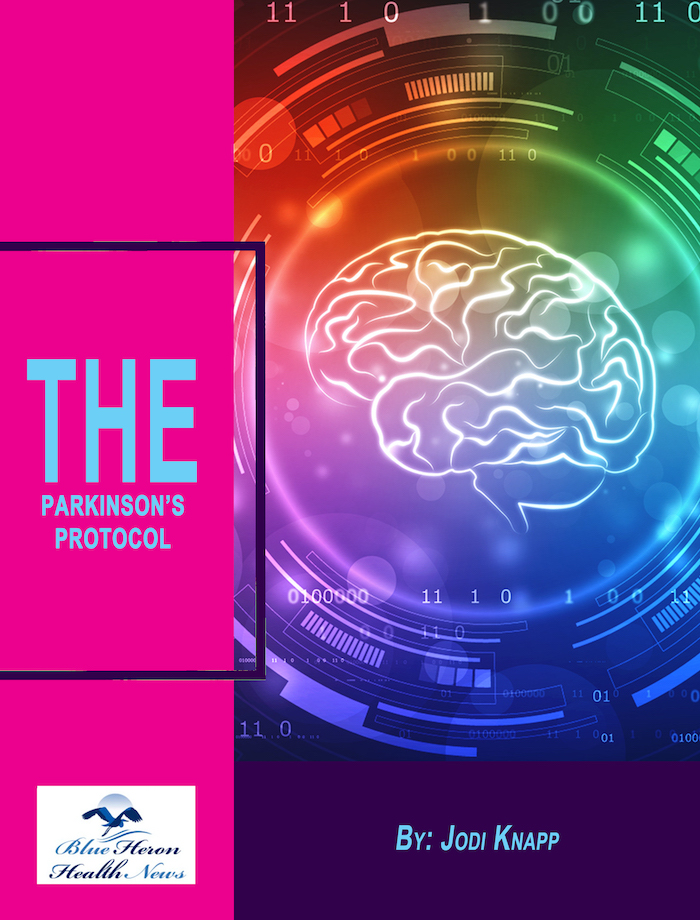
The Parkinson’s Protocol™ By Jodi Knapp Parkinson’s disease cannot be eliminated completely but its symptoms can be reduced, damages can be repaired and its progression can be delayed considerably by using various simple and natural things. In this eBook, a natural program to treat Parkinson’s disease is provided online. it includes 12 easy steps to repair your body and reduce the symptoms of this disease.
Nanotechnology in Parkinson’s Disease Treatment
Nanotechnology has emerged as a promising approach in the treatment of Parkinson’s disease (PD), a neurodegenerative disorder that involves the progressive loss of dopaminergic neurons in the brain. Parkinson’s disease is characterized by motor symptoms like tremors, rigidity, bradykinesia, and postural instability, as well as a range of non-motor symptoms. Traditional treatments, such as dopamine replacement therapy (e.g., levodopa), can alleviate symptoms but do not halt disease progression or reverse neuronal damage. This is where nanotechnology offers novel solutions, with its ability to manipulate matter at the nanoscale (typically 1 to 100 nanometers) to develop new therapeutic strategies.
Nanotechnology’s potential in Parkinson’s disease treatment lies in its ability to improve drug delivery, promote neuroprotection, and facilitate tissue repair. Below are some key ways nanotechnology is being explored in the context of Parkinson’s disease:
1. Nanoparticle Drug Delivery Systems
- Blood-brain barrier (BBB): One of the biggest challenges in treating Parkinson’s disease is the blood-brain barrier, which protects the brain from harmful substances but also makes it difficult for many drugs to reach the brain. Nanoparticles, due to their small size, can be designed to cross the blood-brain barrier, allowing drugs to be delivered more effectively to the brain.
- Targeted drug delivery: Nanoparticles can be engineered to deliver dopamine or other neuroprotective agents specifically to areas of the brain that are affected by Parkinson’s disease, such as the striatum and substantia nigra. This can help reduce systemic side effects and improve the efficacy of treatments.
- Liposomes, polymeric nanoparticles, and nanocarriers can encapsulate drugs such as dopamine, neurotrophic factors (e.g., GDNF), or alpha-synuclein inhibitors and target them directly to the affected brain regions.
- Enhanced bioavailability: Nanoparticles can also be used to improve the bioavailability of drugs that are poorly absorbed or metabolized, ensuring that a higher concentration of the drug reaches the brain. This is especially important for therapies that aim to alter the progression of Parkinson’s disease or offer neuroprotection.
2. Nanotechnology for Neuroprotection
- Antioxidant delivery: Oxidative stress is a key factor in Parkinson’s disease, contributing to the damage and death of dopaminergic neurons. Nanoparticles can be used to deliver antioxidants directly to neurons, where they can neutralize harmful free radicals and reduce oxidative damage.
- For example, nanoparticle-based delivery of antioxidants like curcumin (a compound found in turmeric) or Coenzyme Q10 has been studied for their potential to protect neurons from oxidative stress in Parkinson’s disease.
- Neurotrophic factors: Nanoparticles can also be used to deliver neuroprotective molecules, such as glial cell line-derived neurotrophic factor (GDNF) or brain-derived neurotrophic factor (BDNF), which promote the survival and growth of dopaminergic neurons. The use of nanoparticles ensures that these factors are delivered more efficiently to the brain and can potentially slow or stop neuronal degeneration.
3. Nanotechnology for Gene Delivery and Therapy
- Gene therapy is another potential treatment for Parkinson’s disease, especially for targeting the underlying genetic causes of the disease. Nanoparticles can be designed to deliver genes or small RNA molecules (like siRNA or miRNA) to the brain cells, offering a method of correcting genetic defects or modulating gene expression associated with Parkinson’s disease.
- For example:
- Gene silencing strategies using nanoparticles can be used to silence the expression of alpha-synuclein or other toxic proteins involved in the disease.
- Gene replacement therapy can be used to deliver healthy copies of genes that code for neuroprotective proteins or enzymes that are deficient in Parkinson’s patients, such as Parkin or PINK1.
4. Nanorobots for Tissue Repair
- Nanorobots or nanoscale devices are being developed to interact with cells at the molecular level and repair damaged tissue. In Parkinson’s disease, these devices could potentially deliver therapeutic molecules or assist in the regeneration of dopaminergic neurons.
- Nanobots could be designed to specifically target damaged brain regions, repair damaged neurons, or even replace them. While this is still an emerging area of research, the possibility of using nanorobots for tissue repair and cellular regeneration holds great promise for the future of Parkinson’s disease treatment.
5. Nanotechnology for Diagnostic and Monitoring Tools
- Nanotechnology can also be used for early diagnosis and monitoring of Parkinson’s disease, helping to detect changes in the brain before significant symptoms appear or to track disease progression.
- Nanoparticle-based biosensors can be designed to detect biomarkers associated with Parkinson’s disease, such as alpha-synuclein aggregates or specific proteins in cerebrospinal fluid (CSF). These sensors can provide real-time information about the disease state and help clinicians make more informed decisions about treatment.
- Imaging techniques that use nanoparticles can improve neuroimaging for Parkinson’s, allowing for more accurate visualization of brain changes and monitoring the effects of treatments.
6. Nanotechnology for Inflammation Control
- In Parkinson’s disease, neuroinflammation plays a significant role in the disease’s progression, and controlling this inflammation could offer therapeutic benefits. Nanoparticles can be used to target microglia (the brain’s immune cells), which are often overactive in Parkinson’s patients and contribute to inflammation and neuronal damage.
- Nanoparticles that can modulate immune responses and reduce inflammation are being developed as a way to slow neurodegeneration and reduce the damage caused by the immune system’s overactivation. These approaches could help protect dopaminergic neurons from further damage in Parkinson’s disease.
7. Nanotechnology in Parkinson’s Disease Models
- Nanotechnology also plays a critical role in the development of animal models and in vitro models of Parkinson’s disease. By using nanomaterials, researchers can create more accurate models that mimic the disease’s progression, allowing for better testing of potential therapies.
- Nanoparticles can be used to label specific cells or proteins in animal models, allowing researchers to track the progression of disease and evaluate the effectiveness of new treatments more accurately.
8. Challenges and Risks
- While the potential of nanotechnology in Parkinson’s disease treatment is significant, several challenges remain:
- Safety: The long-term safety of nanoparticles must be carefully studied to ensure they do not cause unintended toxicity or adverse effects in the brain or other organs.
- Regulation: Nanotechnology-based treatments must go through rigorous clinical trials and regulatory approval processes to ensure they are safe and effective for human use.
- Delivery efficiency: Ensuring that nanoparticles can be delivered effectively to the brain in sufficient quantities, without being cleared by the immune system, is a major hurdle.
- Cost and scalability: Manufacturing nanoparticles and nanomaterials at a scale sufficient for widespread clinical use can be costly and technically challenging.
Conclusion
Nanotechnology has the potential to revolutionize the treatment of Parkinson’s disease, offering new ways to deliver drugs and therapies directly to the brain, promote neuroprotection, and even repair damaged tissues. Through targeted drug delivery, neurotrophic factor delivery, gene therapy, and tissue repair, nanotechnology could provide solutions that go beyond symptom management and offer the possibility of slowing or halting disease progression. However, further research, rigorous clinical trials, and safety evaluations are required to ensure that these nanotechnology-based therapies are effective, safe, and suitable for use in patients with Parkinson’s disease. As the field of nanomedicine advances, it is likely to become an important part of the therapeutic landscape for Parkinson’s disease in the future.

The Parkinson’s Protocol™ By Jodi Knapp Parkinson’s disease cannot be eliminated completely but its symptoms can be reduced, damages can be repaired and its progression can be delayed considerably by using various simple and natural things. In this eBook, a natural program to treat Parkinson’s disease is provided online. it includes 12 easy steps to repair your body and reduce the symptoms of this disease.